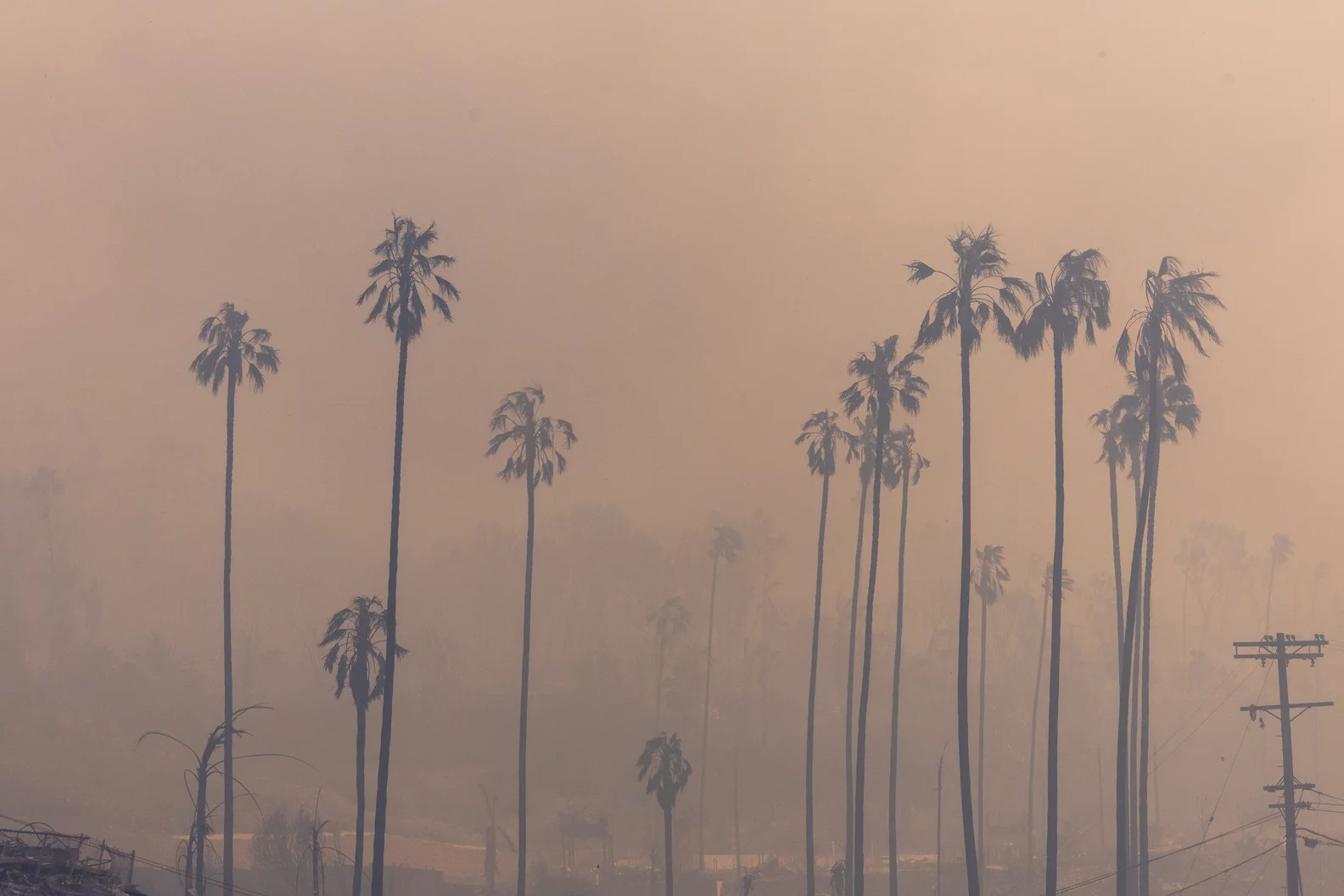You might not think much about air quality, but with the wildfires in Los Angeles, it’s important to watch air quality alerts and know how to stay safe when the air is bad.
Air quality alerts happen when pollution levels are too high. We’ve seen this before, like with New York’s orange skies in 2023 and now with the fires in the Pacific Palisades.
If you’re not used to bad air, it can feel scary, and the alerts might be confusing. This guide explains the Air Quality Index (AQI) and how to stay safe in different air conditions. Keep reading for simple tips on handling poor air quality and treating symptoms.
What Is the AQI?
The Air Quality Index (AQI) measures air pollution. It gives a score from 0 to 500. Lower numbers mean cleaner air, and higher numbers mean dirtier air. The Environmental Protection Agency (EPA) and state agencies check the air and give it this score. You can find your local AQI on AirNow.gov. Normally, the AQI in the US is under 100, which is safe. But in June 2023, the East Coast had AQI over 400, which is very harmful. This can happen during wildfires when the air gets worse. It’s important to check the AQI to stay safe when the air is bad.
What Is a Normal Air Quality Index?
A normal AQI is between 0 and 50, which means the air is good and safe for everyone. After that, the AQI can go from moderate to hazardous. Here’s a simple breakdown of the rankings (and right now, the Pacific Palisades has an AQI of 487):
AQI 0 to 50: Green. The air is good, and there’s no need to worry. The air quality is fine, with little to no risk.
AQI 51 to 100: Yellow. The air is okay, but people who are sensitive to pollution might feel it. The air quality is acceptable, but there could be a risk for some people.
AQI 101 to 150: Orange. The air is unhealthy for sensitive groups like people with heart or lung conditions, older people, and kids. They may feel health effects, but most people won’t.
AQI 151 to 200: Red. The air is unhealthy for everyone. People might experience health effects, and sensitive groups may feel more serious issues.
AQI 201 to 300: Purple. The air is very unhealthy, and everyone should be worried. The risk of health effects is higher for everyone.
AQI 301 and above: Maroon. The air is hazardous, and it’s a health emergency. Everyone is at risk, and everyone should be concerned.
What Is a Sensitive Group?
Sensitive groups include people with heart or lung disease, older adults, children, people with diabetes, and those with lower incomes. The CDC also says those with asthma, heart disease, or COPD are sensitive to air pollution. Pregnant people should be extra careful with air-quality reports. People of color may also be more likely to have asthma and other respiratory problems, making them more affected by wildfire smoke and pollution.In short, anyone who is sensitive to air pollution or has a health condition that makes them more at risk is part of a “sensitive group.” But wildfire smoke can affect everyone, even if you’re not in a sensitive group. Wildfire smoke can cause coughing, wheezing, shortness of breath, chest tightness, and throat irritation. It can also make lung problems worse and lead to heart problems because tiny particles in the smoke can enter the bloodstream.
Symptoms of Bad Air Quality
Dr. Gupta says people exposed to poor air quality may have symptoms like coughing, sneezing, itchy or watery eyes, a runny nose, sore throat, headaches, tiredness, and trouble breathing. The US Air Quality Index suggests everyone watch for these signs and take it easy if they appear. People with heart disease should also look for symptoms like palpitations, shortness of breath, or unusual tiredness, which could be a serious problem. If you have any of these, contact your doctor.Dr. Perlmutter says symptoms from wildfire smoke usually go away once you’re no longer exposed, but some people may have symptoms for days. If you feel symptoms that could be from poor air quality, it’s a good idea to reach out to your healthcare provider, especially if you have a health condition.
How to Deal With Poor Air Quality
When the air quality is bad, it can be confusing. Should you stay inside or go out? Here are some simple tips:
Limit Outdoor Activities: The higher the AQI, the less time you should spend outside. If it’s “yellow” (moderate), people with asthma should stay inside more. At “orange,” shorten outdoor activities. When the AQI is over 100, sensitive groups should keep outdoor activities light and short. If it’s over 151, avoid intense outdoor activities. At 201, stay inside if you can. At “301” (hazardous), everyone should stay inside as much as possible.
Wear a Mask: If you go outside, wear a good mask like an N95 or KN95. These masks help protect from smoke. Regular masks don’t work as well.
Use an Air Purifier and AC: Keep your windows and doors closed. Use your air conditioner and turn it to recirculate mode. If you have an air purifier, turn it on to clean the air.
Watch for Heat: If it’s hot and you don’t have AC, find a cool place like a public building. Don’t risk heatstroke while trying to avoid bad air.

[…] you eat can affect your cortisol levels. The foods you eat play a big part in how your body handles stress. Some foods raise cortisol, […]